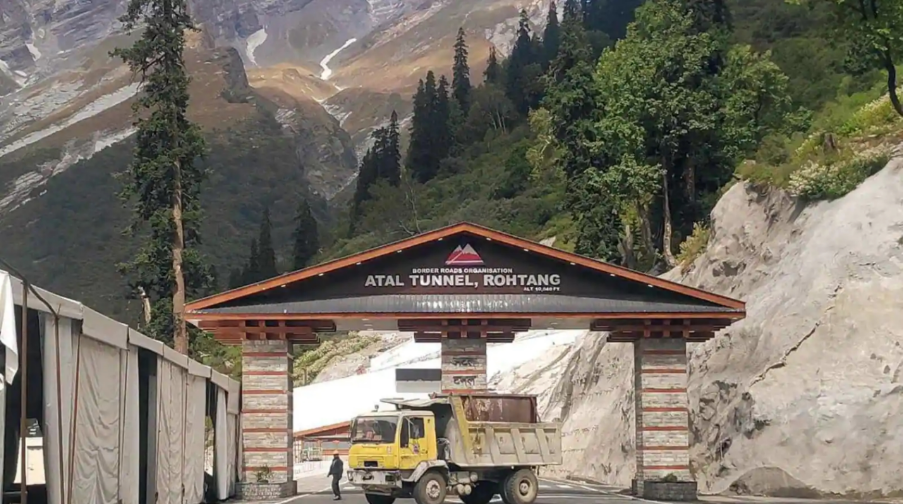Ramping up border infrastructure
Context: Recently External Affairs Minister S. Jaishankar released details of the government’s projects on border infrastructure and connectivity.
It focused on initiatives in the north and east along India’s 3,488 km border with China (Line of Actual Control or LAC), including ramping up infrastructure on the Indian side in Ladakh, Himachal Pradesh, Uttarakhand, Sikkim and Arunachal Pradesh, as well as projects connecting India to “friendly” neighbouring states such as Bangladesh, Bhutan, Nepal and Myanmar.
Purpose Of the briefing
- The government has focused on rapid development of infrastructure along the Northern Borders with China for strategic reasons.
- This was a reference to successive skirmishes with the Chinese People’s Liberation Army in Chumar in 2014, Doklam in 2017 and the ongoing standoff along the entire LAC since April 2020 when the Chinese army amassed troops along the border, which resulted in the Galwan clashes, the first such violent incident in 45 years.
What initiatives did the briefing outline?
- An official document released, highlighted a multi-pronged approach which include improving connectivity to the LAC through roads, bridges and tunnels, improving cross-border connectivity to neighbouring countries via highways, bridges, inland waterways, railroads, electricity lines and fuel pipelines, modernising and constructing integrated check posts (ICPs) at all the border crossings to smooth trade, and funding and constructing infrastructure projects in neighbouring countries.
- Many of these projects have commenced or been in the pipeline for several decades,the government claimed that it has accelerated them and completed execution.
- For example, the length of roads constructed in the China border areas in the period from 2014 to 2022(6,806 km) is almost double the length constructed from 2008-2014 (3,610 km), and cited a similar case for bridges built.
What about neighbourhood projects?
- The report lists dozens of projects in the neighbourhood that have been planned, financed or constructed — some involve major outlays like the railway links to Nepal and Bangladesh, the Mahakali motorable bridge and the Maitri Setu between Tripura and Bangladesh, the Kaladan Multi-Modal Transit Transport Project (KMTTP)which includes a 158 km waterway, the Sittwe port project and road to Mizoram.
- It also speaks ofSouth Asia’s first cross-border petroleum products pipeline between Motihari in India and Amlekhgunj in Nepal, another High Speed Diesel pipeline with Bangladesh that will reduce petrol prices and road congestion, and a Bhutanese dry port in Pasakha bordering West Bengal being developed under an Indian government grant.
Significance to the timing of the report
- The report was released in the wake of an official Security Conference report that said Indian forces have lost access to 26 of 65 patrolling points along the LAC since 2020.
- According to the analysis, some of the points have been encroached upon by PLA troops and infrastructure, while at some, patrolling has been suspended by mutual agreement in talks with Chinese border commanders to avoid conflict.
- The government may have also sought to allay concerns in neighbouring countries in the light of the recent drop in share value and credit ratings of the Adani Group that has been highlighted internationally.
- The Adani Group has been involved closely with the Modi government’s foreign policy forays, especially in the neighbourhood, and is in talks for a number of projects, including electricity with Bangladesh and Nepal, ports in Myanmar and Sri Lanka, as well as renewable energy projects in the region, particularly as the government has been concerned about Chinese infrastructure outlays in the neighbourhood.
- Officials in neighbouring countries will watch closely to see if financing for those projects is impacted by the Adani controversy.
| Practice Question
1. What are the recent initiatives taken by the government in border regions? |




